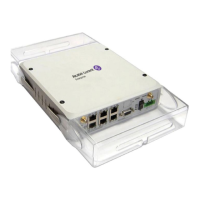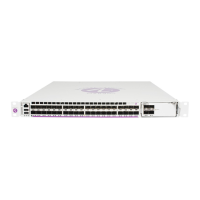VLL Service Considerations
Page 184 7705 SAR OS Services Guide
In N-to-1 mode, OAM cells are transported through the VLL in the same way as any other
cell.
VPI/VCI Translation
To simplify provisioning, the same VPI and VCI can be used at different sites. Before traffic
from various sites can be switched to a Radio Network Controller (RNC), VPI and VCI
translation must occur in order to uniquely identify the site and the far-end equipment.
The endpoints of a PWE3 N-to-1 cell mode ATM VLL can be:
• ATM VCs—VPI/VCI translation is supported (the VPI/VCI at each endpoint does
not need to be the same)
In this case, when the VPI and VCI used at the endpoints are different, both the VPI
and the VCI can be modified at the endpoint (VPI and/or VCI can only be changed
by the far-end PE node, before the cells are switched to the ATM interface).
• ATM VPs—VPI translation is supported (the VPI at each endpoint need not be the
same, but the original VCI will be maintained)
In this case, when the VPI and VCI used at the endpoints are different, only the VPI
can be modified at the endpoint (VPI can only be changed by the far-end PE node,
before the cells are switched to the ATM interface).
Control Word
An optional control word (CW) is supported for ATM VLLs. Refer to Pseudowire Control
Word on page 190 for more information.
Cell Concatenation
Cell concatenation (or packing) into a pseudowire packet payload at the VC and VP levels is
supported. Cells are packed on ingress to the VLL and unpacked on egress.
Figure 33: N-to-1 Cell Mode Encapsulation
(Optional)
Control
Word
Cell 1
Hdr
PWR
Hdr
Cell M
Hdr
Cell M Payload
Cell 1 Payload
44 4 4848
Tunnel
Hdr
Common Port
ML
Hdr
PPP
4427
19730

